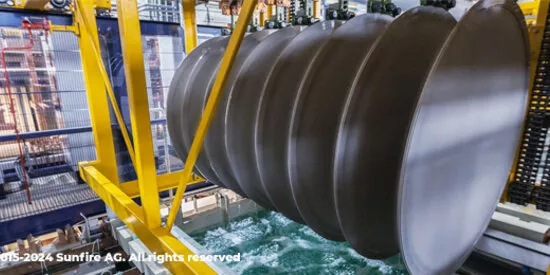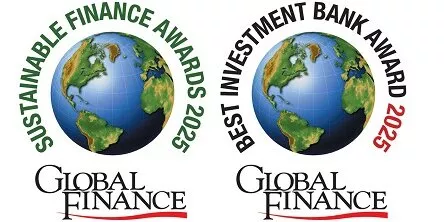
Fiber optic as a location advantage: Jet fuel for Germany’s rural fiber network
Germany's fiber optic network is one of the least developed in Europe. Experts from Societe Generale explain why and give an outlook on how smart financing options can help the country change course.
In the coming years, DeutscheGlasfaser GmbH will equip an additional 300,000 homes in Germany with optic fiber. That's quite a number considering that last year only 880,000 households were connected to ultra-fast internet.
Nine banks with Societe Generale as mandated lead arranger are making it possible thanks to a 650 million euro in financing granted in January to Deutsche Glasfaser GmbH investor KKR.
A fiber optic project of this magnitude is unusual for Germany. Especially in rural areas, federalist structures act as an impediment to the rollout of a modern fiber optic network. Communities typically try to expand the network on their own but thereby never reach a critical mass.
"Every municipality has to develop its own strategy and find the right partners for it," says Arnd Baumgard, head of infrastructure finance for Germany, Austria and Switzerland. "Every municipality starts at the bottom of the learning curve, which is why the fiber optic rollout is much slower in Germany than in other countries."
By the middle of 2017, fiber to the home (FTTH) and fiber to the building (FTTB) connections made up only 2.1 percent of Germany's overall broadband connections. In Latvia, fiber makes up 62.3 percent of broadband connections, and 40 percent in Spain. OECD countries average over 22 percent.
A study conducted by the Bertelsmann Stiftung and the Fraunhofer Institut für System- und Innovationsforschung (ISI) sums up the situation thus: Germany is playing catch-up in the rollout of high-capacity broadband networks. Especially with regard to fiber optic infrastructure, which offers the greatest potential for future applications, Germany is one of the least well-equipped countries in Europe — especially in rural areas.
The fiber optic network is important for Germany from a social as well as from an economic standpoint. "The fiber optic network can improve the quality of life and work in rural areas," says Baumgard. "People who work from home are dependent on a fast internet connection."
Fiber is also vital for a number of brand-new and promising technologies. "Within a short amount of time, the connection to a fiber optic network will be as important to people and businesses as a gas, water or electricity line," says the Bundesverband Breitbandkommunikation, an industry association. "Industry and work 4.0, cloud computing, smart farming, autonomous vehicles, gigabit societies, 8K television and virtual reality are only some of the catchphrases for the digitization of the economy and society."
Only a change in strategy can speed up the fiber optic rollout in rural Germany. France may be able to act as an example for how to successfully finance it. As a French bank, Société Générale has a lot of experience there: "The landscape is completely different," says Anna Noé, head of technology, media and telecom finance for Germany. "The rollout is centrally planned there. Large projects are granted under a concession model, and the government supports the rollout with up to 3.3 billion euros in funding to ensure that the projects are economically viable. That way, we see transactions with financing volumes of about 100 million euros to 700 million euros."
Societe Generale has been a front runner of this development from the beginning. Unfortunately projects of this size are still exceptions in Germany. Among them are loans of nearly a combined 1 billion euros granted to inexio and DeutscheGlasfaser by Societe Generale and other banks. "Equity investors, infrastructure banks and other investors are mainly on the hunt for larger projects," says Noé. "Financing therefore shouldn't be an impediment to such projects."
Societe Generale has combined its experience with project and TMT financing to successfully undertake large fiber optic projects, since they are unique in some ways: "Unlike in traditional infrastructure projects, the cash flow that goes toward repaying the loan doesn't come from a public source, but from users," says Baumgard. That creates some market risk. "It's therefore important to understand the market well. Otherwise, we wouldn't be able to judge the quality of a business plan."
In Germany, bundling fiber optic projects is up to businesses and banks for now. Just like France, Germany needs to find structures that enable the creation of bigger projects, since larger units will attract more investments.




